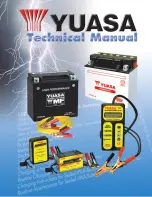
Canada only:
The following text is published as required of
manufacturers under subsection 18.4 (4) of the
Motor Vehicle Safety Regulations.
If you believe that your vehicle has a defect which
could cause a crash or could cause injury or
death, you should immediately inform Transport
Canada in addition to notifying Mercedes-Benz
Canada Inc.
If Transport Canada received similar complaints,
it may open an investigation, and if it finds that a
safety defect exists in a group of vehicles, it may
order a recall and remedy campaign. However,
Transport Canada cannot become involved in
individual problems between you, your dealer or
Mercedes-Benz Canada Inc.
To contact Transport Canada, you may call the
Defect Investigations and Recalls Division toll-
free in Canada at 1-800-333-0510 or
819-994-3328in the Gatineau-Ottawa area or
internationally; you may also go to the following
websites for more information:
R
English: https://www.tc.gc.ca/recalls
R
French: https://www.tc.gc.ca/rappels
Limited Warranty
*
NOTE Damage to the vehicle arising from
violation of these operating instructions.
Damage to the vehicle can arise from viola‐
tion of these operating instructions.
Such damage is not covered by either the
Limited Warranty or the new or used-vehicle
warranty.
#
Observe the instructions in these oper‐
ating instructions on proper operation
of your vehicle as well as regarding pos‐
sible vehicle damage.
QR codes for rescue card
The QR code stickers are affixed to the B-pillar on
the driver's and co-driver's side. In the event of
an accident, emergency services can use the QR
code to quickly determine the corresponding res‐
cue card for your vehicle. The current rescue card
contains, in compact form, the most important
information about your vehicle e.g. the routing of
electric cables.
Further information can be obtained at https://
www.mercedes-benz.de/qr-code.
Data storage
Electronic control units
Electronic control units are installed in your vehi‐
cle. Some of them are necessary for your vehicle
to function safely, some provide support when
driving (driver assistance systems). In addition,
your vehicle offers comfort or entertainment
functions which are also made possible with elec‐
tronic control units.
Electronic control units contain data memories
which can permanently or temporarily store tech‐
nical information on the vehicle's operating state,
component stress, service requirements as well
as technical events and malfunctions.
This information generally documents the state of
a component part, a module, a system or of the
environment such as:
R
operating statuses of system components
(e.g. fluid levels, battery status, tire pressure)
R
status messages concerning the vehicle and
its individual components (e.g. number of
wheel revolutions/speed, deceleration, lateral
acceleration, display of the fastened seat
belts)
R
malfunctions or defects in important system
components (e.g. lights, brakes)
R
information on events in which the vehicle is
damaged
R
system reactions in special driving situations
(e.g. airbag deployment, intervention of sta‐
bility control systems)
R
ambient conditions (e.g. temperature, rain
sensor)
In addition to the provision of control unit func‐
tions, this data serves to recognize and rectify
malfunctions as well as to optimize vehicle func‐
tions by the manufacturer. Most of this data is
volatile and is only processed in the vehicle itself.
Only a small proportion of the data is stored in
event or fault memories.
When you use services, the technical data from
the vehicle can be read out by service network
employees (e.g. workshops, manufacturers) or
third parties (e.g. breakdown services). Services
include repair services, maintenance processes,
warranty events and quality assurance measures,
for example. The data is read out via the connec‐
tion for the diagnostics connection in the vehicle,
which is required by law. The respective service
network locations or third parties collect, process
24 General notes
















































